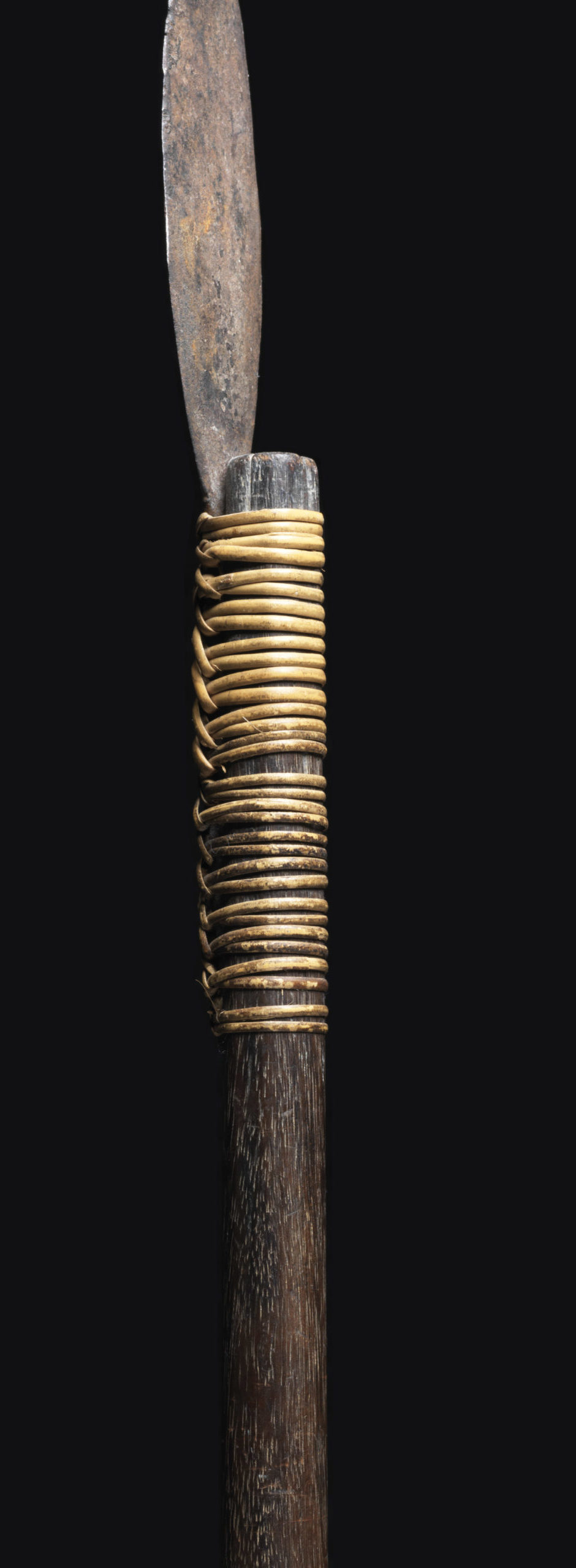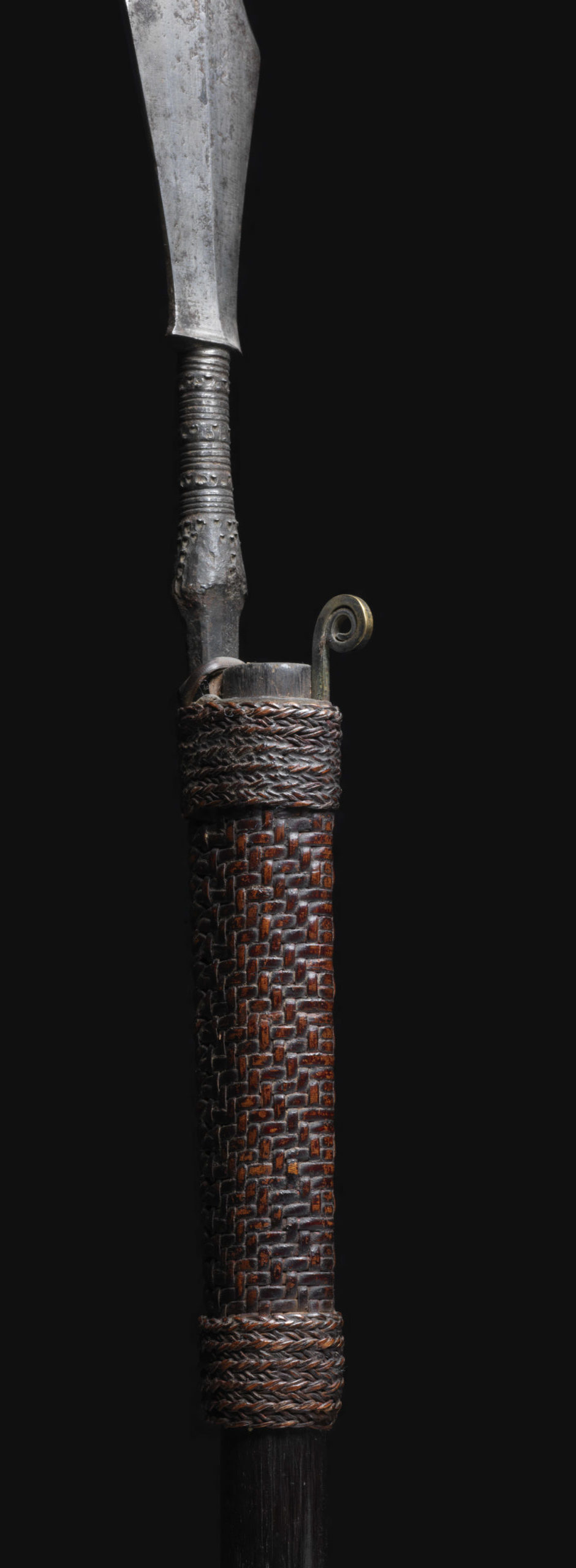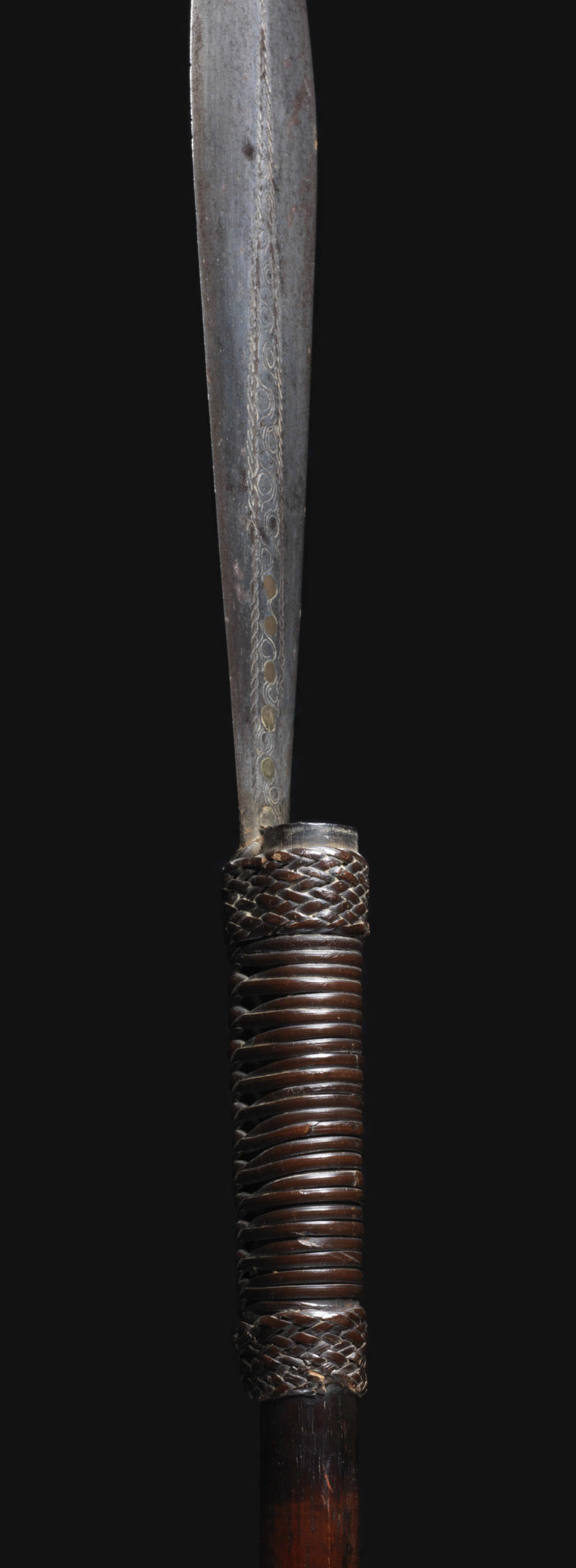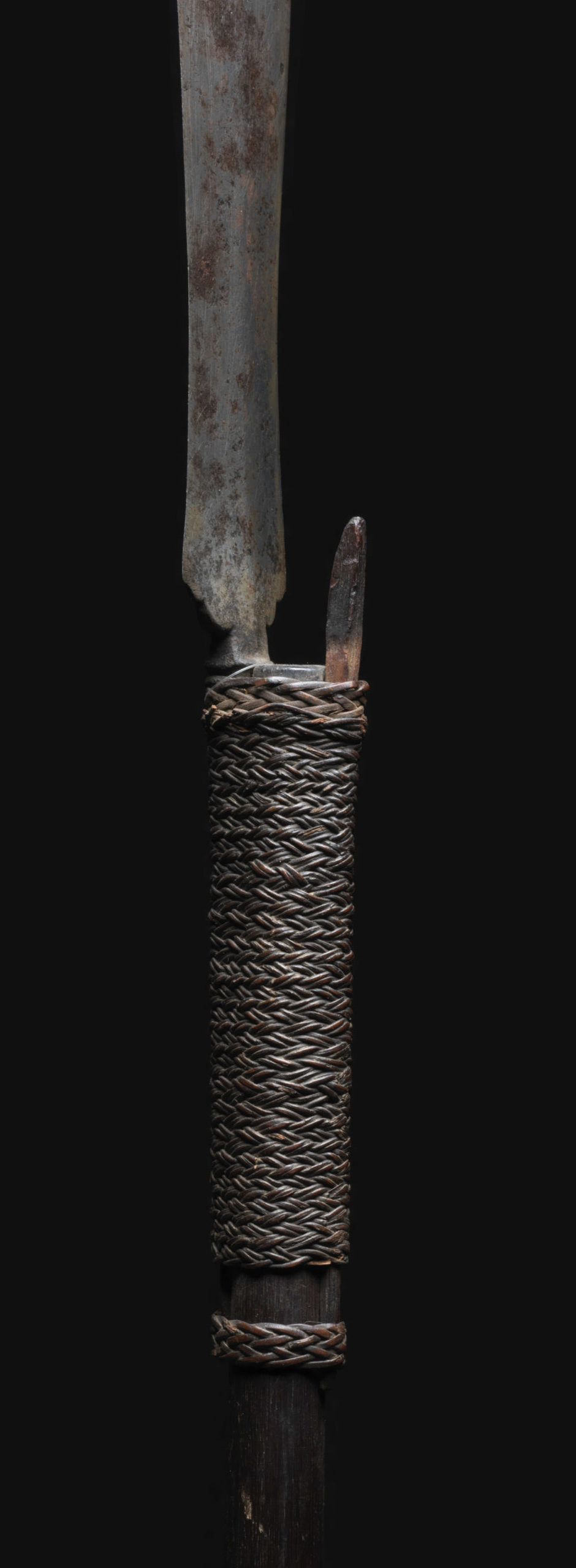







Start › You can leave your head on › Borneo › Borneo Room View #5 › Blowpipe Sumpitan
The exemplary blowpipe is made from a piece of hardwood of the Nilgang tree. The lance tip is made of steel ground on both sides with chasing and brass inlays. Strong rattan bands held the tip to the shaft and prevent splitting. The sumpitan (also leput, lohinglambi, spiut, sumpit) is a combination weapon (blowgun and lance) from Borneo. It is used by the various Dayak groups, but also by the Buna, the pre-Malay inhabitants of the mountainous inland, as a hunting and war weapon. It has a long history in Southeast Asia, blowpipes are already depicted at candi Borobudur (9th century). In the past, bows were also common in Borneo, but today they are only used – repressed by the sumpitan – in a ritual context. The blowpipe is mainly used for hunting smaller animals such as dwarf deer or birds and monkeys in treetops. It is used less often for hunting big game. A skilled marksman can use the blowpipe to kill his victim at a distance of 60 metres. Making a good sumpitan is a technical feat. A roughly stemling or straight branch of the length of the later blowpipe (approx. 160 – 240 cm) and 7 – 10 cm in diameter is clamped in a device in which it sits on the ground and cannot slip. With a long steel drill or chisel, the wood is drilled through successively over its entire length; the drilling sphere is rinsed out regularly with water. The last piece of the pipe is drilled from the opposite side. Straightening is achieved by bending the pipe under heating. The remaining slight bend is compensated by placing the aiming device in such a way that the wood pulls itself into the straight lines by its own weight when aiming. When the cane hole is completed, the inside is finely finished. To do this, rattan cords are pulled through the cane with the addition of sand. The finest polishing is done with the help of clay and lime powder. When the cane is finished, a lance blade is attached to one end and wrapped with rattan cords at the point of attachment to the cane to provide a firmer hold. The lance tip is usually forged from steel, but in some cases ironwood tips (Eusideroxylan zwageri, family Lauraceae) are used. On the side opposite the lance tip, an aiming aid, a “front sight” (kiahulon) made of wood, bone or metal is often attached. A ring of dammar resin is usually attached to the mouthpiece, which serves as a rest for the lips. The poison for the arrows made of palm leaf bark or bamboo splinters was extracted from the upas tree, it is also called the poison tree and belongs to the mulberry family.







Blowpipe „sumpitan“
Object
Blowpipe “sumpitan“
Culture
Borneo, Dayak
Time
Around 1900
Dimensions
Length 213 cm
Material
Wood, rattan, steel